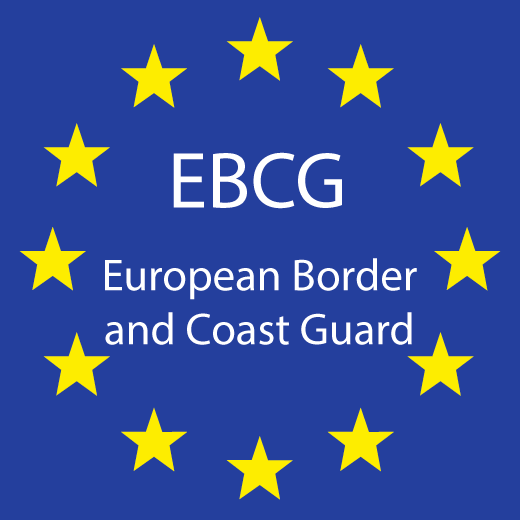Europe was in a great trouble in 2016 as a result of a massive inflow of asylum seekers from the Balkan route. The subsequent pressure from the event on then-existing EU institutions was immense and hence required an immediate response from the European Council. The countries were not ready to take the refugees without severe consequences and in fact, this has caused a serious political turmoil in nearly ever EU member state.
European Parliament and European Council decided to adopt a new Regulation (EU) 2016/1624. This was the birth of a new European Border and Coast Guard Agency (EBCG). The agency did not originate from a scratch but rather shared common grounds with Frontex Regulation. Though EBCG shared an expanded scope with diverse nature of relations to asylum policies, the main political mechanism of the entity was set out by Article 19.6.
EBCG’s operational power according to Article 19.6
Article 19.6 on European Border and Coast Guard Agency states that a failure of any EU member state in controlling its own border resulting in threatening the common efforts of member states to guard the external borders of the Schengen zone would aloe EBCG to deploy its teams in the country at fault to oversee the supervision and border management operations.
Simply put, if any EU country admitted too many asylum seekers and threatened the external borders shared with other countries, EBCG will take over in management of the borders of specific member state. Of course, it would need to happen at a request of the European Commission and would need an approval from the European Council. But the agency, indeed, has an unprecedented right to intervene in internal affairs of the country.
EBCG and National Units
One thing has to be clarified here: even if Council approves the proposed intervention from EBCG, the national unit of the accused country still has its own say. The decision is not unconditional and could be objected by the member state. There’s a whole set of procedures and steps to take before the action:
- The member state will get a verbal notice from the Agency letting them know that they put external borders of the Schengen Area at risk
- The EBCG sends the binding recommendations to the member state with a deadline or request to implement them immediately
- If the member state fails to comply with the recommendations, then the case goes to Council to decide on the necessity of the intervention
- In case the intervention is approved by the Council then EBCG must prepare and draft an operational plan on how it’s planning to solve the crisis
- After presenting the draft, member state must approve is, otherwise plan is not operational
- If the member state does not cooperate within 30 days from the presented draft, European Commission can trigger a procedure from the Schengen Border Code
- According to the Schengen Border Code, other EU member states can shut their borders with the non-compliant Member State
The Technical and Supervisory Agency
Officially, the European Union claims that the Agency’s new mandate will increase efficiency of the EU without altering its institution nature. The Agency, formerly known as Frontex was a technical actor that had limited political responsibilities. Although the Agency’s new mandate greatly expands its activities, this discourse does not recognize any qualitative changes in its governance or the distribution of its responsibilities between agent and principal.
The European Border and Coast Guard Agency will continue to be under an intergovernmental governance system. This is evident in its Management Board which currently consists of two outnumbered representatives from the Commission and the heads of each border service. This institutional perspective shows that the Member States control Europe’s integrated borders management, while the EBCG is merely a technical tool. The Agency, despite having a strengthened mandate, still needs to rely upon the goodwill of Member States for the deployment of human and operational resources. Without these resources, Frontex missions will be nothing more than empty shells.
Many experts are waiting for the EBCG mandate update to include newer information and security systems. Two of the most important entities appearing in late 2025 are visa ETIAS and EES. ETIAS is an European Travel Information and Authorisation System for visa-exempt travelers to Europe while EES is an Entry-Exit System designed for 3rd country nationals visiting EU.
How EBCG May Threaten National Sovereignty
It may seem that the Agency’s new mandate is tilting the balance in favor of a transfer at supranational level of sovereignty. According to another analyst, the new mandate is based on the assumption that bolstering Frontex with more capabilities would aid in responding adequately to the “refugee crisis”.
The agency’s strength is in the execution of its operational and regulatory functions. The Agency continues to have the majority of its human resources dedicated to data-gathering, risk-analysis and its regulatory task. The Agency’s new mandate includes the development and expansion of Eurosur, an information-exchange platform that aims to enhance surveillance and intervention capabilities at the borders.
Its core activities revolve around the monitoring of migration routes and patterns. This information informs all its other practices. It insists that it does ‘intelligence-led police’. The EBCG processes the intelligence, but it requires that the Member States collect and submit the information first. This leaves the Agency with the sole discretion to determine the quality and quantity of the intelligence.
The Agency’s new mandate, which focuses on its operational functions, aims to address what the Commission identified as Frontex’s biggest deficiency. This is the insufficient contribution of some Member States (in terms of human resources and equipment). It was clear that the Agency’s operational capacity is severely compromised by Member States’ inability to pay their fair share of costs related to Frontex operations. This became evident during the 2015 refugee crisis.
This mandate strengthens the Agency’s coordination role and makes States’ obligations clearer and more restrictive. It closes loopholes that previously allowed Member States to avoid their responsibility in providing equipment and guards, empowers the Agency’s liaison officer to represent it in Member States hosting joint operations, and grants the Agency the aforementioned right to intervene’.

